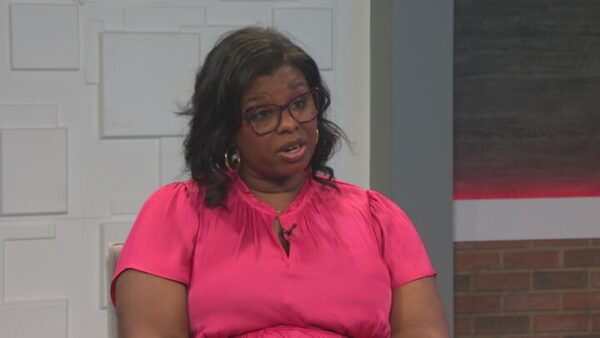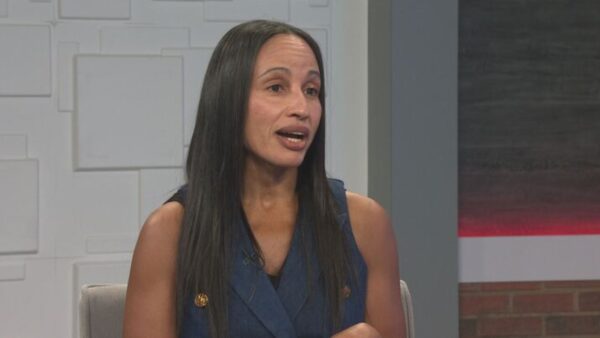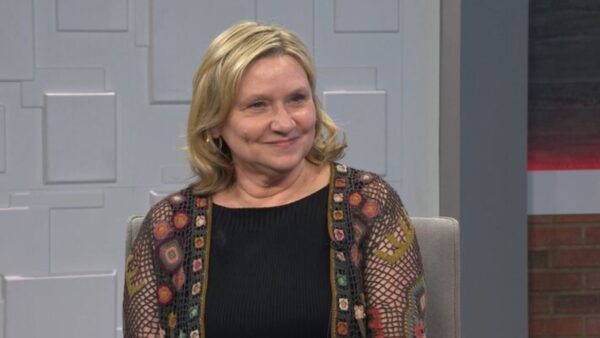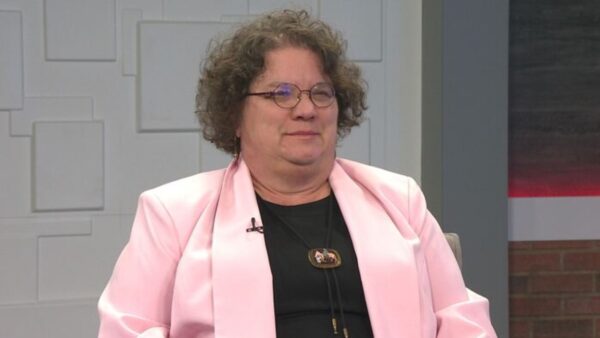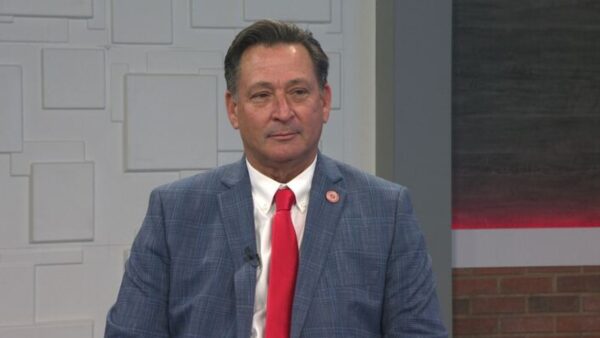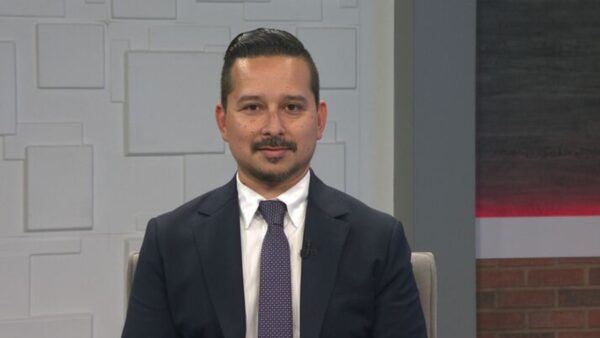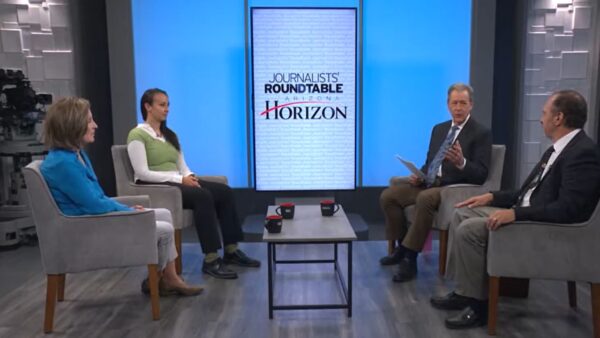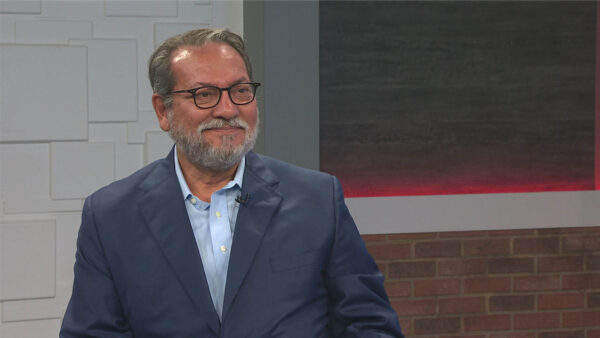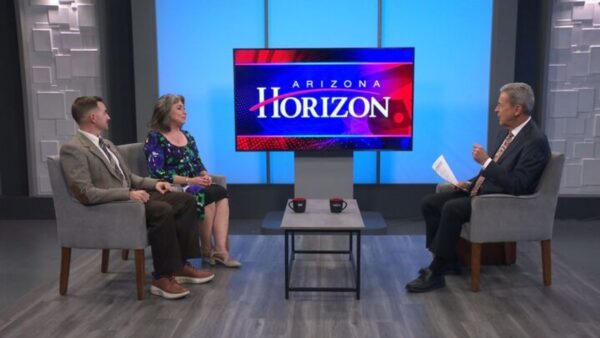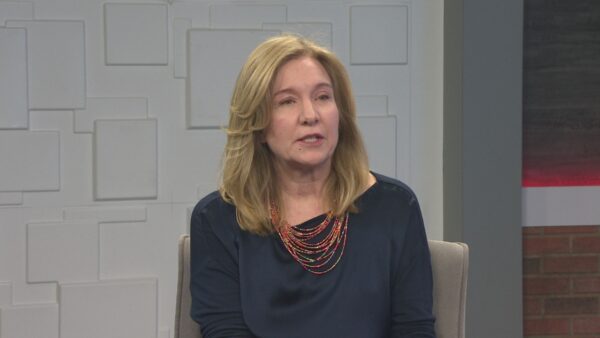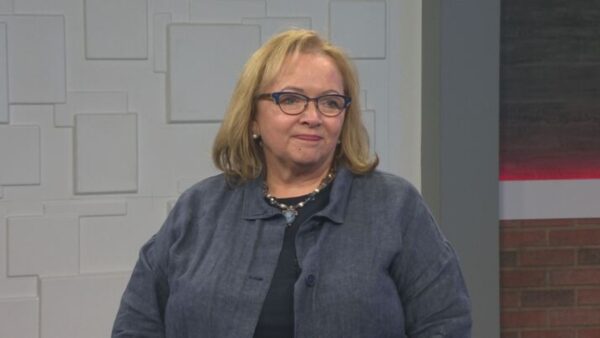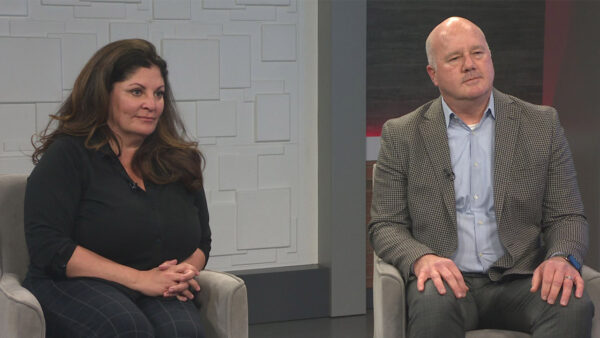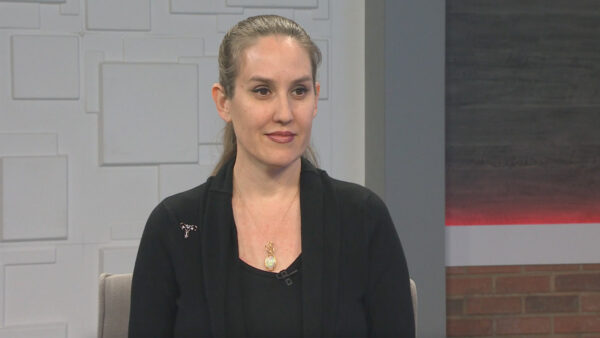There were three incidents at the state prison complex in Kingman last week. The Arizona Department of Corrections says two of them were riots, several inmates and corrections officers were hurt and prison facilities were damaged. Over 1,000 inmates were transferred to other prisons following the incidents. Charles Ryan, director of the corrections department, will discuss the incidents.
CHRISTINA ESTES: Coming up next on "Arizona Horizon," we'll talk to state corrections director Charles Ryan about the recent disturbances at a privately run prison in Kingman.Find out why a local economist says more college graduates in Arizona will benefit all of us.And there's a new way for Arizona businesses to come up with cash. All that next on "Arizona Horizon." "Arizona Horizon" is made possible by contributions from the Friends of Eight, members of your Arizona PBS station. Thank you.
CHRISTINA ESTES: Good evening and welcome to "Arizona Horizon." I'm Christina Estes in for Ted Simons. We've heard about three incidents at the state prison complex in Kingman last week. The Arizona department of corrections describes one as "a riot." The four days of violence and unrest led to nine staff members and four inmates being hurt and housing units so badly damaged that more than 1,100 inmates had to be moved to other facilities. Here to talk about what happened is Charles Ryan, he is director of the corrections department. Thanks for joining us for taking the time to come in, we appreciate it. Before we get to what happened in Kingman, can you give us an overview of the state prison system in Arizona? How many inmates, how many prisons?
CHARLES RYAN: We have ten state prison complexes located throughout the state and we also have six private prison contracts. We have a total of 42,600 inmates in custody and another 5,800 inmates under supervision in the community following their release.
CHRISTINA ESTES: And how does the private system work? Who works there, are they private employees, state employees, who pays for private facilities and who oversees them?
CHARLES RYAN: They're private contracts. And we contract with three different firms, management-training corporation, which is where this riot occurred in Kingman, the CCA facility in Eloy and the G.O. facility in Florence and in West Phoenix. The employees of the private prisons are, in fact, their employees and what we have to ensure contract compliance, we have state employees and monitors on site at each of these locations to ensure that the policies are being adhered to, and the contract is being fulfilled.
CHRISTINA ESTES: And you mentioned the Kingman facility is run by the Utah-based management and training corp. This is where 3,500 minimum and medium-custody inmates are housed or were housed before what happened last week. We have an aerial view of the facility that we can put up of the complex and you can sort of walk us through what happened where.
CHARLES RYAN: Let me do that briefly and if you look, let me orient you in the unit, in the upper right, that is the Hualapai unit, a medium-security unit and all the inmates housed there are in a dormitory environment. When you look at the l-shaped facility in the bottom left, that is a minimum-security unit for 2,000. It is divided in half and there's 1,000 inmates on each half. The entire facility with the exception of the detention unit cells are all dormitories.
CHRISTINA ESTES: And it's that minimum where the trouble started last Wednesday right?
CHARLES RYAN: It did on the first. It began with there were 1,999 inmates there, they had to make room for one who needed to be put in detention. One inmate was brought out, African-American, other African-American inmates went after him. He sought safe haven, and then those inmates attacked the corrections officers that were there.
CHRISTINA ESTES: And that, you describe as a disturbance, unrest, what's the difference between riot versus unrest?
CHARLES RYAN: Technically, we have minor and major, and frankly, for the sake of your audience, we were able to restore order relatively quickly for the viewer. When you look at the pictures that are being shown, when you consider the dollar value for the damage and the medium-security units and how long it was prolonged, a riot is a common term.
CHRISTINA ESTES: So it started the minimum, and then you had trouble in the medium, a couple of things happened there, right?
CHARLES RYAN: On July second, the medium unit had a problem in the evening, starting in one of the dormitories. It was about 8 o'clock in the evening. The Ramadan meal had just been completed, inmates were being put away in the dormitories for the night and one inmate got into an altercation verbally with a corrections officer, and then from inside the dormitory, the inmate started tearing the place up. It went on throughout the night. Staff were not able to control those inmates, so in the early morning hours, at about 6 o'clock the inmates, if you will, gave up and in two of the buildings we brought out 700 inmates and put them on the ground in flex cuffs. I went ahead and followed my deputy director and inspector general and I flew up, did an assessment, and made the decision to declare an emergency to go ahead and move inmates to other facilities because what they had torn up was no longer habitable, and we worked that list from the county board of supervisors association and reached out and found bed space for the 700 and put those inmates on the ground and made a plan to start moving them out later that day and into the night. What transpired next on July 4th at about 10 minutes to two in the afternoon, the other housing units, the remaining three in the Hualapai unit also erupted. I'm certain those inmates figured out inmates were being moved away from that facility elsewhere and they probably thought "we know how to get out of here. Let's go ahead and riot and we'll travel, as well." By this time, the department of corrections had 120 of our staff, 96 of which were tactical support unit officers and there were K- officers on site to augment and support what was being attempted by MTC, basically in a very aggressive way took control of the riot and put it down in about an hour and 15 minutes. And then the next thing, all of those inmates were out on the ground and they spent the rest of the fourth of July and into the morning of the fifth on the ground in flex cuffs.
CHRISTINA ESTES: When you talk about the state prison employees that you brought in to help, we know local law enforcement, DPS also were called in to help secure, make sure the perimeter stayed safe that no one got out. We had 13 people between staff and inmate hurt, four out of the five housing units uninhabitable right now, who pays for all this?
CHARLES RYAN: Management training corporation is going to foot the bill. This is not going to be a burden to the taxpayer of Arizona. It was their facility and it was greatly damaged and all but destroyed and they are going to have to renovate it and they will have to pay for the expenses related to the relocation of the 1,168 people that we've moved.
CHRISTINA ESTES: Are you mad about this?
CHARLES RYAN: We're not pleased with what's occurring. Governor Ducey and I are equally concerned about this and we are conducting a two-fold investigation. One is a criminal investigation for the crimes that have occurred. The rioting and destruction of property is criminal. And the department's criminal investigation unit is conducting that investigation. In terms of trying to understand what caused this, we have brought in an assessment team, other staff from the department of corrections, to do that assessment of the administration, the emergency response, the operational practices, what was going on with inmate programming and the like. And people, we've heard some questioning, "well why are you investigating?" Well, that's what we do. It's our responsibility to conduct that investigation. We are transparent, that report will be forthcoming upon completion and the outcome of that certainly is going to have to include with options and recommendations to the governor.
CHRISTINA ESTES: This facility opened in 2004 . There's a history. Earlier this year there was an inmate reportedly raped and murdered, the family is suing the state as well as the private contractor. Five years ago, three inmates escaped, two of those involved in a murder of a couple in New Mexico. At that time, you held a news conference and laid out the state report and cited things like ill-equipped facilities and disrespectful inmates, faulty alarms, inadequate oversight. You also cited a lack of confidence in the private contractor. Are you confident today?
CHARLES RYAN: I think that's going to end up being part of our assessment in the final analysis. It is very concerning what occurred five years ago. I know that quite well. I'm the one that conducted that press conference and led that investigation. And I have conveyed to the CEO of MTC we're going to go through the same process again that we had used before and it remains to be seen what the outcome is going to be.
CHRISTINA ESTES: Is the facility, do you think the private contractor is running a safe facility for inmates and for the public when we look at what happened last week and the escape five years ago? Should it be shut down?
CHARLES RYAN: I don't think that is a conclusion that I'm ready to consider. I want to see what the facts are and find out what my team determines. They've been there since Monday and they will be there for at least two weeks before they'll be in a position to start providing me with recommendations or their findings.
CHRISTINA ESTES: A spokesperson for this Utah-based company has reportedly said that staffing wasn't an issue involving last week's events. Is that a fair statement? Is it too soon to say? Do you have any idea?
CHARLES RYAN: I know that the staffing pattern that they have at least 60 vacant CO's out of about 380, so that's a concern. It's been explained to me and I understand that the way they cover the vacancy is through overtime. So that is something that has to be looked at because people get tired and you cannot depend solely on overtime to cover posts.
CHRISTINA ESTES:60 vacancies out of 380?
CHARLES RYAN: 380 corrections officer positions.
CHRISTINA ESTES: Would that be acceptable in a state-run prison?
CHARLES RYAN: We, too, have vacant positions in the department of corrections. We have 6,640 positions of which about 550 are vacant. It was 620 but we've looked at some processes to reduce the time it takes to recruit and get people to come to the academy so we're gaining ground as far as the state facilities.
CHRISTINA ESTES: What kind of timeline do you have for the investigation?
CHARLES RYAN: I'm hoping to have it completed by the end of the month. And then we will go ahead and submit our recommendations to the governor and his staff.
CHRISTINA ESTES: Charles Ryan, thank you so much for joining us. We appreciate it.
CHARLES RYAN: Thank you.
Charles Ryan:Corrections Department Director





